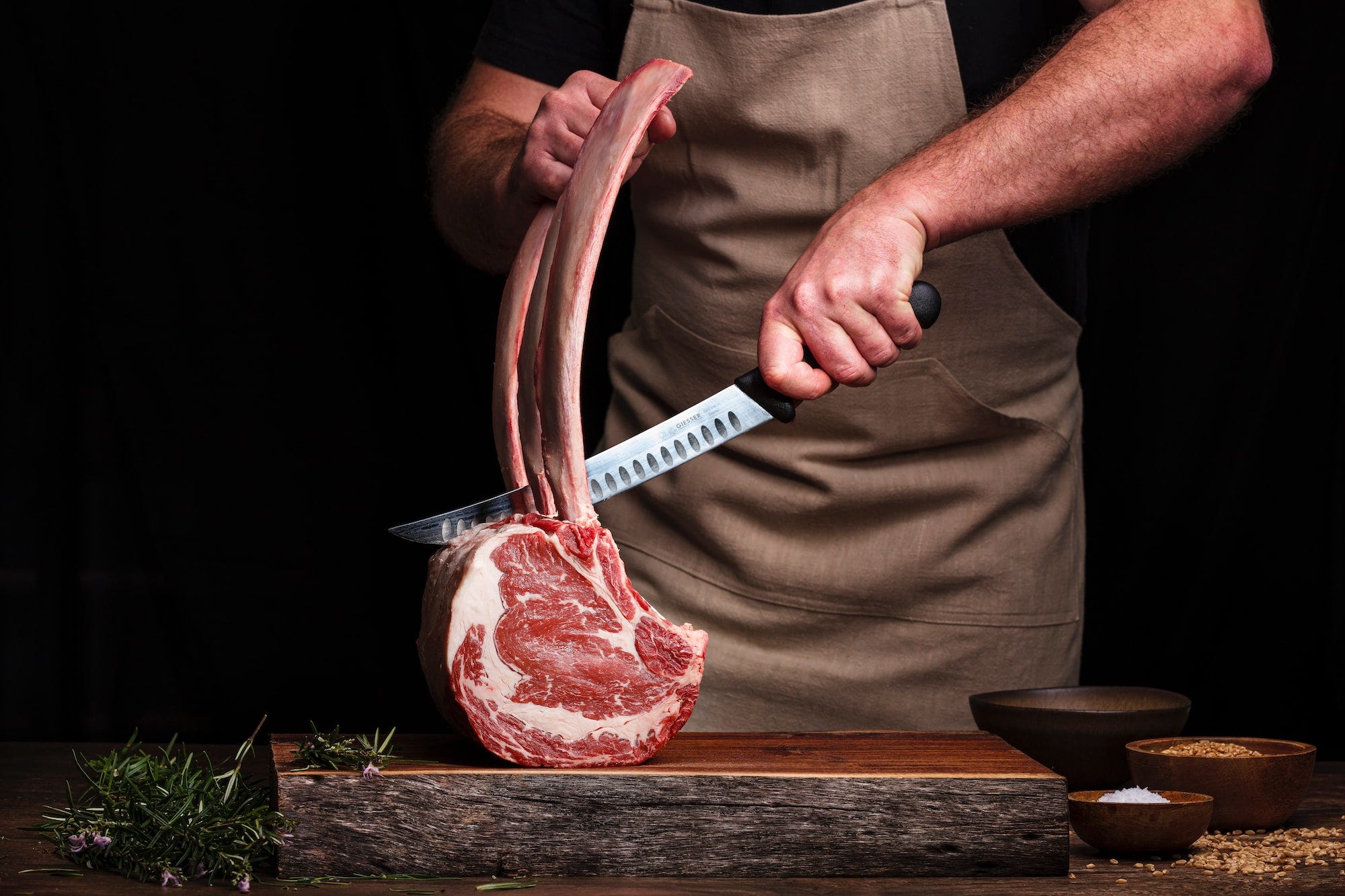Grain-Finishing & Limping Cattle, How They Both Affect The Bottom Line
In this week's R2R Edition: A unique study follows cattle from pasture to plate to determine the differences in grass-fed vs. grass-fed, grain-finished beef! A 2-year study finds the prevalence of feedlot lameness may be increasing and offers solutions.

In this week's R2R Edition:
- A unique study follows cattle from pasture to plate to determine the differences in grass-fed vs. grass-fed, grain-finished beef – this study measures the impact of these production systems on palate and pocketbook!
- A 2-year study finds the prevalence of feedlot lameness may be increasing. The authors offer valuable findings of risk factors and possible solutions.
Beef Production
The effects of grass-fed beef on palate and pocketbook

The high-points:
- Grass-feeding cattle is a common management style in many parts of the US, including producers selling to specialty food markets.
- The higher growth potential animals, entirely grass-fed, had larger ribeye areas but less marbling.
- Corn-supplemented cattle had brighter and redder meat but, conversely, yellow fat, likely because they were on grass longer.
What you need to know: Most of us have heard of grass-fed cattle, as well as grass-fed, grain-finished cattle. This management style is common practice in many parts of the US, including producers selling to specialty food markets. This is also a common practice in Brazil, where today's research comes from. Grass-fed cattle often have less intramuscular fat and discoloration of their fat and muscle. These differences can affect the marketability of the final product and, in turn, limit the price a producer can receive for their animals. Additionally, animals with less growth potential (i.e., poor genetics) can take longer to reach an adequate weight and finish for slaughter in a grass-fed system.
Today's paper was unique, as it studied the differences in grass-fed and grass-fed, grain-finished steers at various steps of beef production. Steers were fed out on grass pastures until the first half were large and fat enough for slaughter; these would be the higher growth potential animals. They then provided supplemental corn grain to the remaining steers, the lower growth potential animals, until they were heavy and fat enough for slaughter. Because of this, at the time of slaughter, each animal was roughly the same weight.
However, the carcasses of these animals were different. The higher growth potential animals, which were entirely grass-fed, had larger ribeye areas but had less marbling and dressing percentage when compared to those that received grain. Additionally, the higher growth potential group reached slaughter weight 68 days sooner, suggesting greater feed conversion.
Finally, onto the meat and potatoes of this research (pun intended). The researchers found differences in meat color and quality of the two treatments. The corn-supplemented cattle had brighter and redder meat but yellow fat, likely because they were on grass longer. Using consumer panels, they asked participants to rate the meat for flavor, aromas, and tenderness, with the consumer panel preferring the corn-supplemented product.
Important to note:
- The animals in this study were not evaluated for genetic merit to compare their propensity for growth and feed conversion. Although it was a fair assessment that the slower-growing animals were lower performing, I would like to have seen genetic evaluations to back up these assumptions. There could be other factors that were at play, like sickness, injuries, or stress.
- There was not a group fed supplemental corn grain for the entirety of the study, and I would have liked to see a comparison between the grass-fed and a grain-finihsed group for the same number of days.
Industry application: Do not underestimate the benefit of backgrounding or fattening cattle with greater growth potential (i.e., better genetics). The potential difference in performance could decrease the cost of feeding an animal, both by decreasing days on feed and increasing feed efficiency. Also, corn-finishing cattle can significantly improve an animal's meat quality and consumer preference, even when supplemented for the last 60 to 70 days.
Read more about it: Carcass and meat quality of young Angus steers with different growth potential finished exclusively grass-fed or corn supplemented.
Health
Cattle Limp = Cash Lost

The high-points:
- The effects of lameness on the wellbeing of the hurt animal and the bottom line of the feedlot are both concerns worth investigating.
- Observed an increase in the proportion of animals with lameness between current and old studies.
- Common risk factors were: increased body weight, older animals, increased pen density, and decreased forage in the diet.
What you need to know: Cattle lameness is the topic of a new research paper, one culprit being hoof infections, which we touched on in a previous R2R. However, there is far more to lameness than hooves. It can include damage to the joints, ligaments, infections, etc. -- the list is really endless. Lameness is a good sign that there is something wrong with the animal and that it is in pain. The animal is not able to get around as easily, which limits feed and water intake. Additionally, the injured animals are found lying more often, increasing their risk of respiratory infections. Both dairies and feedlots have an elevated prevalence of lameness.
Due to the costs associated with and welfare concerns of cattle lameness in feedlots, researchers wanted to determine how often they occur and what the causes are. These researchers observed feedlot cattle diagnosed as lame by pen-riders at two 10,000 head feedlots in Alberta, CA, over two years.
These researchers found a considerable variation in the prevalence of lameness depending on the year. For example, of the treated calves at feedlot A, 35% of treatments were due to lameness during year one but only 19.7% during year two. And feedlot B was the opposite, with 80.3% during year one and 64.9% for year two.
The authors note that a study in 1993 stated the average rate of lameness was 16%, saying, "Possible reasons for the substantial increase in the proportion of lameness observed between the older and more recent studies may be explained by steadily increasing carcass weights over the last 20 years."
As for the source of the lameness: of the 4395 calves diagnosed, the most common cause was foot-rot, followed closely by digital dermatitis (see this previous post), which together make up a majority of the diagnosis. Common risk factors were: increased body weight, older animals, increased pen density, and decreased forage in the diet.
The increased body weight puts more strain on the hooves and the joints. As for older animals, the authors state, "...yearlings are typically housed on pasture for a longer period of time before being placed into the feedlot (compared with calves) and are generally more reactive as they are usually handled infrequently."
The more animals in each pen, the greater the risk of an animal becoming lame, possibly due to less area for lying ability which increases time standing and the risk of hoof issues. Finally, the rate of lameness increased as the forage inclusion decreased, but laminitis was low in prevalence, so the connection was not able to be established.
Industry application: Many sources of lameness in feedlot cattle can be controlled, and the benefit to the feedlot is high. Possible benefits include decreased doctoring costs, increased feed consumption, increased average daily gain, and more animals making it to slaughter. Strategies that can be implemented, as explained by the researchers, "... increasing the percentage of forage in the diet, maintaining clean, dry pens by routinely scraping or bedding, reducing slaughter weights, and reducing handling frequency may help to reduce the incidence of lameness in feedlot cattle."
Read more about it: A prospective longitudinal study of risk factors associated with cattle lameness in southern Alberta feedlots.
